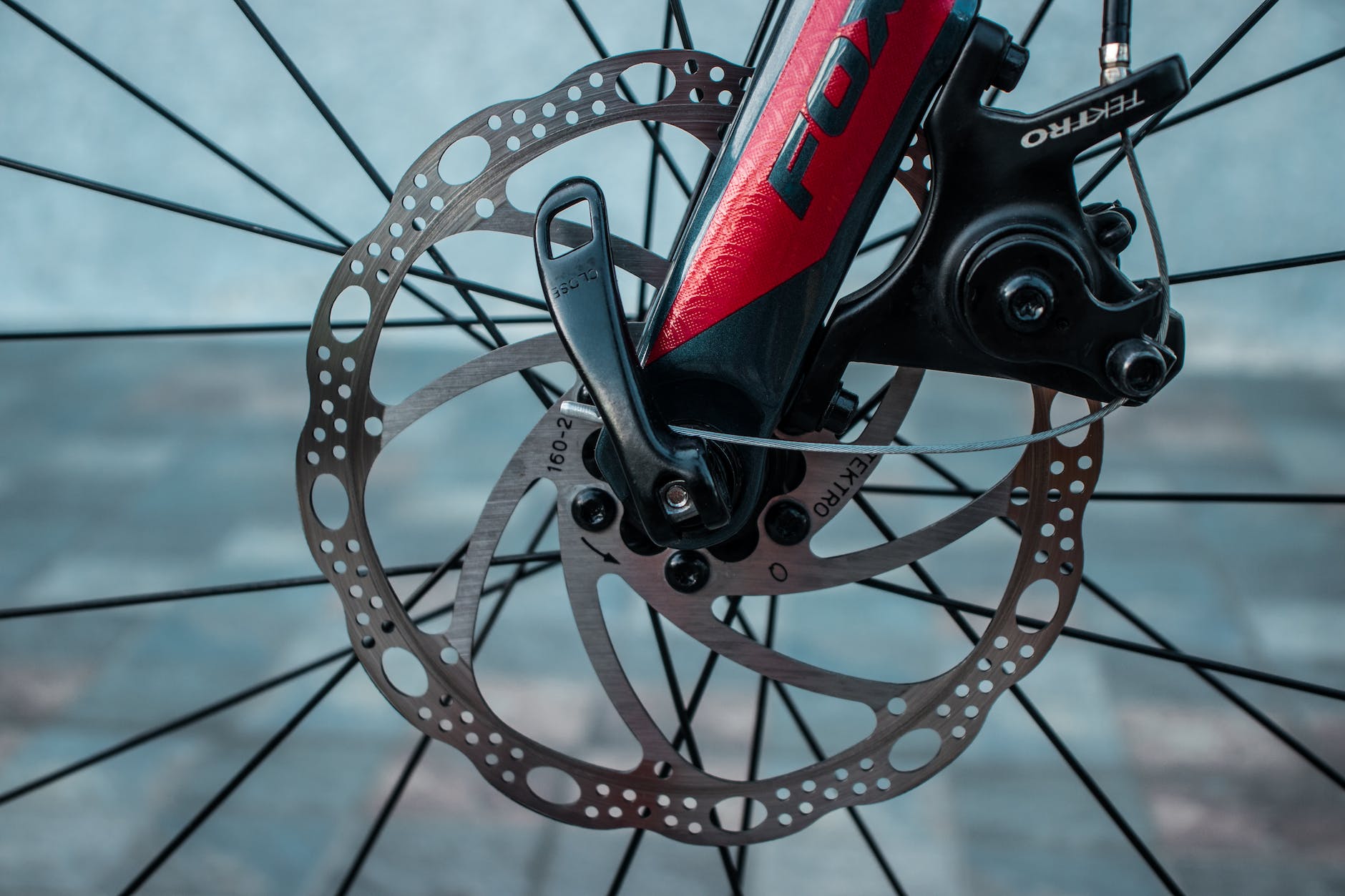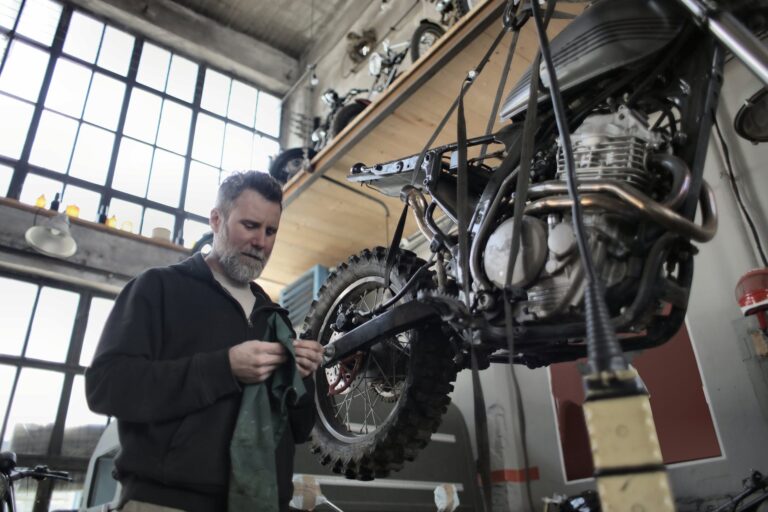Understanding Brake Rotors
Brake rotors are an essential component of the disc brake system in a vehicle. These rotors, also known as brake discs, work together with brake pads to create friction and slow down or stop the vehicle (MotorTrend). They are typically made of cast iron or cast steel, but premium-class and racing cars may use custom rotors made of ceramic or carbon materials (Hawk Performance).
What are Brake Rotors?
Brake rotors are the heaviest and largest single pieces on each axle of a vehicle (Hawk Performance). They are an integral part of the braking system and play a crucial role in stopping the vehicle by providing friction for brake pads. When the brake pedal is applied, the brake calipers squeeze the brake pads against the rotors, generating the necessary friction to slow down or stop the vehicle.
Importance of Brake Rotors
Brake rotors are critical components of a car’s brake system and are subject to replacement as they wear. It is essential to maintain the condition of the rotors to ensure optimal braking performance and safety. Worn or damaged rotors can negatively impact braking efficiency, leading to longer stopping distances and potential safety hazards (Hawk Performance).
Regular inspections and timely replacement of worn rotors are crucial for maintaining the overall effectiveness of the braking system. It is recommended to have a professional brake service, such as those offered by brake repair shops or mobile brake services, to assess and replace the brake rotors when necessary.
Types of Brake Rotors
Brake rotors are available in various types, each with its own advantages and considerations. The type of rotor used in a vehicle depends on factors such as driving conditions, vehicle type, and personal preferences.
Here are some common types of brake rotors:
| Type of Brake Rotor | Description |
|---|---|
| Solid Rotors | Solid rotors are made of a single piece of cast iron or steel. They are the standard choice for most vehicles and provide reliable performance for everyday driving. |
| Vented Rotors | Vented rotors have internal vanes or fins between the two braking surfaces. These vanes promote better heat dissipation, making them ideal for high-performance vehicles or situations that involve frequent braking, such as mountain driving or towing heavy loads. |
| Composite Rotors | Composite rotors are made from a combination of materials, such as cast iron with a carbon or ceramic coating. These rotors offer enhanced performance, durability, and heat resistance compared to traditional solid rotors. They are commonly used in high-performance or racing applications. |
It’s important to consider the specific requirements of your vehicle and driving style when selecting the appropriate type of brake rotors. Consulting a professional brake mechanic or referring to the vehicle manufacturer’s recommendations can help ensure that you choose the right rotors for your needs.
Understanding the basics of brake rotors is essential for proper brake maintenance and replacement. By recognizing the significance of brake rotors and being aware of the various types available, you can make informed decisions regarding brake rotor replacement and ensure the continued safety and performance of your vehicle.
Signs and Symptoms of Worn Brake Rotors
As a crucial component of the braking system, brake rotors play a vital role in ensuring safe and effective stopping power for your vehicle. Over time, brake rotors can wear down due to the friction generated during braking. Recognizing the signs and symptoms of worn brake rotors is essential for maintaining the performance and safety of your vehicle.
Minimum Thickness and Wear Limits
Brake rotors have a minimum thickness that should not be exceeded. Manufacturers typically specify a minimum acceptable thickness for brake rotors, which is usually around 0.25 inches. It is important to replace brake rotors if they are worn beyond this specified limit to ensure optimal braking performance and safety (Brakes To You). According to KBB, brake rotors should be replaced when they are worn down to a thickness of 1/8 inch or less.
Visual Inspection of Brake Rotors
Regular visual inspections of your brake rotors can help identify signs of wear and determine if replacement is necessary. If you notice deep grooves or scoring on the surface of the rotors, it is an indication that they are worn and should be replaced (Brakes To You). Visible cracks or fractures on the rotor surface are also signs of significant wear and indicate the need for replacement (Brakes To You).
Symptoms of Worn Brake Rotors
Several symptoms can indicate that your brake rotors are worn and in need of replacement. One common sign is pulsation or vibrations felt through the brake pedal when applying the brakes. This pulsation can be caused by warped rotors, and replacing them will help restore smooth and effective braking (Brakes To You). If you experience vibrations or pulsations during braking, it is important to have your brake rotors inspected and replaced if necessary.
Another symptom of worn brake rotors is a decrease in braking performance. If you notice that your vehicle takes longer to come to a complete stop or if you need to apply more pressure to the brake pedal, it may be an indication that the brake rotors have worn down and should be replaced (Brakes To You). Additionally, excessive noise during braking, such as grinding or squealing sounds, can also be a sign of worn brake rotors that require replacement.
Regular inspections and maintenance of your brake system are crucial for identifying signs of worn brake rotors. If you notice any of these symptoms or suspect that your brake rotors may be worn, it is important to have them checked by a qualified brake mechanic. Timely replacement of worn brake rotors will help ensure your vehicle’s braking system operates at its best, providing you with safe and smooth stops when you need them most.
Factors Affecting Brake Rotor Wear
Several factors contribute to the wear and tear of brake rotors. Understanding these factors can help car owners anticipate when brake rotors may need replacement and take appropriate maintenance measures. The key factors affecting brake rotor wear include driving habits and conditions, brake pad material, and vehicle weight and performance.
Driving Habits and Conditions
Driving habits and conditions play a significant role in the longevity of brake rotors. Aggressive driving, such as frequent hard braking or riding the brakes, can generate excessive heat in the rotors, leading to accelerated wear. Similarly, driving in hilly or mountainous areas that require constant braking on steep descents can put additional stress on the rotors. On the other hand, cautious driving and maintaining a safe distance from other vehicles can help reduce unnecessary braking, extending the life of the rotors.
Brake Pad Material
The material composition of brake pads can greatly influence the wear of the brake rotors. Softer brake pad materials tend to wear down more quickly and can cause increased rotor wear as well. On the contrary, harder brake pad materials may increase the lifespan of both the pads and the rotors. It is important to choose brake pads that are compatible with the vehicle’s braking system and driving style. For more information on brake pads, consult a trusted mechanic or brake service professional.
Vehicle Weight and Performance
The weight and performance characteristics of a vehicle can also impact brake rotor wear. Heavier vehicles require more force to slow down or stop, putting greater strain on the braking system, including the rotors. Performance vehicles, such as sports cars, often have higher braking demands due to their acceleration capabilities. It is essential to consider the vehicle’s weight and performance when selecting brake rotors, ensuring they are designed to handle the specific demands of the vehicle.
While there are general guidelines for the lifespan of brake rotors, actual wear can vary based on these factors. It is recommended to regularly inspect the brake rotors during routine brake maintenance to identify any signs of wear or damage. Signs that brake rotors may need replacement include excessive noise, vibration, uneven braking, and visible damage (Hawk Performance). The minimum thickness of the rotors should be checked against the vehicle’s service book or manufacturer’s recommendations.
By understanding the factors that contribute to brake rotor wear, car owners can take proactive measures to maintain their braking system’s performance and safety. Regular inspections, proper brake pad selection, and considering the vehicle’s weight and performance can help extend the lifespan of brake rotors and ensure optimal braking performance. When replacement is necessary, it is recommended to replace the entire assembly of brake rotors and brake pads, including front and rear, to maintain balanced braking (Hawk Performance).
Brake Rotor Replacement Process
When it comes to brake rotor replacement, it’s essential to follow the correct process to ensure the safety and effectiveness of your braking system. This section will outline the tools required and the step-by-step process for brake rotor replacement.
Tools Required for Brake Rotor Replacement
Before beginning the brake rotor replacement process, make sure you have the necessary tools on hand. Here are the tools typically required for this task:
-
Jack and Jack Stands: These are necessary to lift the car off the ground, providing access to the wheels for brake rotor replacement. Ensure that you use proper lifting techniques and place the jack stands securely to prevent accidents. (All Rotors)
-
Lug Wrench: A lug wrench is needed to remove the wheel lug nuts that hold the wheel in place during brake rotor replacement. This tool allows you to safely and efficiently loosen and tighten the lug nuts. (All Rotors)
-
Caliper Piston Compression Tool: This tool is necessary to compress the brake caliper piston, allowing for the removal and installation of brake pads during brake rotor replacement. It ensures that the caliper piston is properly aligned for smooth operation. (All Rotors)
-
C-Clamp: A C-Clamp is used to apply pressure to the caliper piston, compressing it enough to allow the old brake pads to be removed during brake rotor replacement. This tool ensures that the caliper piston is fully compressed and ready for the new brake pads. (All Rotors)
-
Brake Cleaner: Brake cleaner is used to clean the rotors, calipers, and other components of the braking system during brake rotor replacement. It ensures that there is no debris or contaminants that could cause the brakes to malfunction. Proper cleaning helps maintain optimal braking performance. (All Rotors)
Removing the Wheel and Caliper
-
Begin by loosening the lug nuts on the wheel that needs the brake rotor replacement. Use a lug wrench in a counterclockwise direction to loosen the lug nuts, but do not remove them completely.
-
Once the lug nuts are loose, use a jack to lift the car off the ground. Place jack stands securely under the vehicle to ensure stability.
-
With the car raised and supported, remove the lug nuts completely and carefully pull the wheel off.
-
Locate the brake caliper, which is usually held in place by bolts or sliding pins. Use the appropriate tools to remove the bolts or pins, allowing the caliper to move freely.
-
Gently remove the brake caliper from the rotor, taking care not to damage the brake line. Hang the caliper securely using a wire or bungee cord to prevent any strain on the brake line.
Installing New Brake Rotors
-
Before installing the new brake rotor, clean the surface using brake cleaner to remove any oil or contaminants.
-
Carefully position the new brake rotor onto the wheel hub, ensuring that it fits properly and aligns with the lug holes.
-
If necessary, replace any hardware such as retaining clips or screws that secure the brake rotor in place. Refer to your vehicle’s manual for specific instructions.
-
Reinstall the brake caliper onto the brake rotor, aligning it with the brake pads. Make sure the caliper is properly positioned and secured.
-
Tighten the bolts or sliding pins that hold the caliper in place, following the manufacturer’s recommended torque specifications.
-
Repeat the process for each wheel that requires brake rotor replacement.
Once you have completed the brake rotor replacement process for all wheels, carefully lower the vehicle from the jack stands. Double-check that all lug nuts are properly tightened before driving.
By following these steps and using the necessary tools, you can successfully replace your brake rotors. If you’re unsure about performing this task yourself, it’s recommended to seek professional assistance from a qualified mechanic or brake repair shop. Proper installation of new brake rotors is crucial for the safe and efficient operation of your vehicle’s braking system.
Choosing the Right Brake Rotors
When it comes to brake rotor replacement, it is essential to select the right brake rotors for your vehicle. Properly matched brake rotors ensure optimal performance, longevity, and safety. Let’s explore the factors to consider when choosing brake rotors: matching them to vehicle specifications, understanding solid rotors vs vented rotors, and material and design considerations.
Matching Brake Rotors to Vehicle Specifications
When replacing brake rotors, it is crucial to ensure they are properly matched to your vehicle’s specifications and requirements. This includes considering the size, design, and material of the brake rotors. Each vehicle has specific rotor dimensions and mounting requirements, so it is important to consult your vehicle’s manufacturer guidelines or seek professional advice to ensure proper fitment.
By selecting brake rotors that match your vehicle’s specifications, you can maintain the integrity of the braking system and ensure optimal performance. Mismatched brake rotors can lead to issues such as uneven braking, excessive wear, and decreased stopping power.
Solid Rotors vs Vented Rotors
Brake rotors come in two main types: solid rotors and vented rotors. Solid rotors are simple, flat discs without any internal cooling features. They are commonly found on lighter vehicles or in the rear braking system.
On the other hand, vented rotors feature internal vanes or fins that promote better heat dissipation. The venting allows air to flow through the rotor, reducing heat buildup during braking and preventing brake fade. Vented rotors are commonly used on the front wheels of vehicles and are recommended for heavier or high-performance vehicles that generate more heat during braking.
When choosing between solid and vented rotors, it is important to consider your vehicle’s weight, performance, and braking requirements. Heavier vehicles or those that undergo intense braking, such as towing vehicles or sports cars, may benefit from the improved heat dissipation provided by vented rotors.
Material and Design Considerations
The material and design of brake rotors can also impact their performance and longevity. Common brake rotor materials include cast iron, carbon composite, and reinforced carbon-ceramic. Cast iron rotors are the most popular choice due to their durability, heat resistance, and cost-effectiveness.
Reinforced carbon-ceramic and carbon composite rotors offer superior performance and heat dissipation, making them ideal for high-performance vehicles. However, they are typically more expensive than cast iron rotors.
When selecting the material and design of your brake rotors, consider your driving style, vehicle type, and budget. It is important to strike a balance between performance, durability, and cost.
By choosing brake rotors that are properly matched to your vehicle’s specifications, understanding the difference between solid and vented rotors, and considering the material and design, you can ensure optimal braking performance and safety.
Remember to consult the manufacturer’s recommendations or seek advice from a professional when selecting brake rotors. Proper installation and maintenance, along with regular inspections, will help extend the life of your brake rotors and ensure a smooth and safe braking experience.
Maintenance and Longevity of Brake Rotors
To ensure the smooth operation of your vehicle’s braking system, regular inspections and maintenance of brake rotors are essential. By taking proper care of your brake rotors, you can extend their lifespan and maintain optimal braking performance.
Regular Inspections and Maintenance
Regularly inspecting your brake rotors is crucial for identifying signs of wear and addressing potential issues early on. It is recommended to have your brake rotors inspected during routine brake service appointments or whenever you notice any concerning symptoms, such as squeaky brakes, vibrations, or reduced braking efficiency.
During the inspection, a qualified brake mechanic will visually examine the brake rotors for any visible signs of damage, such as cracks, grooves, or uneven wear patterns. They will also measure the thickness of the rotors to ensure they meet the minimum thickness requirements.
Additionally, regular brake maintenance, including brake fluid flush and brake bleeding, is crucial for maintaining the overall health of your braking system. Consult your vehicle’s manufacturer guidelines or a trusted brake service professional to determine the recommended maintenance schedule for your specific vehicle.
Extending the Life of Brake Rotors
There are several steps you can take to extend the lifespan of your brake rotors and ensure their optimal performance:
-
Driving Habits and Conditions: Avoid aggressive driving, such as hard braking and sudden stops, as these actions can accelerate brake rotor wear. Additionally, driving in hilly or mountainous terrain may put more strain on the brake rotors, requiring more frequent inspections and maintenance.
-
Brake Pad Material: The type of brake pads used can impact the wear rate of brake rotors. Softer brake pad materials may wear down the rotors faster than harder materials. Consult with a brake professional to choose the right brake pad material that balances performance and rotor longevity.
-
Vehicle Weight and Performance: Heavier vehicles and those with higher performance capabilities may put more stress on the brake rotors. If you own a larger vehicle or engage in activities that put additional strain on the brakes, such as towing or performance driving, it is important to monitor the condition of the brake rotors more frequently.
Replacing Brake Rotors in Pairs
When it comes time to replace your brake rotors, it is generally recommended to replace them in pairs, even if only one rotor is visibly damaged or worn. This practice helps ensure balanced braking performance and can prevent uneven wear on the new and existing rotors.
Replacing both brake rotors simultaneously also allows for consistent braking force distribution between the front and rear wheels, promoting optimal brake system performance and stability.
It’s important to note that the lifespan of brake rotors can vary depending on driving habits, conditions, and the type of brake pads being used. On average, brake rotors should be replaced every 30,000 to 70,000 miles, but this can vary (Brakes To You). Brake rotors should be replaced if they are worn down to a thickness of 1/8 inch or less, or if they are worn beyond the manufacturer’s specified minimum thickness, typically around 0.25 inches (KBB). Consult your vehicle’s manufacturer guidelines or a trusted brake service professional for specific recommendations based on your vehicle’s make and model.
By following proper maintenance practices and promptly addressing any signs of wear or damage, you can maximize the longevity and performance of your brake rotors, ensuring safe and reliable braking for miles to come.







